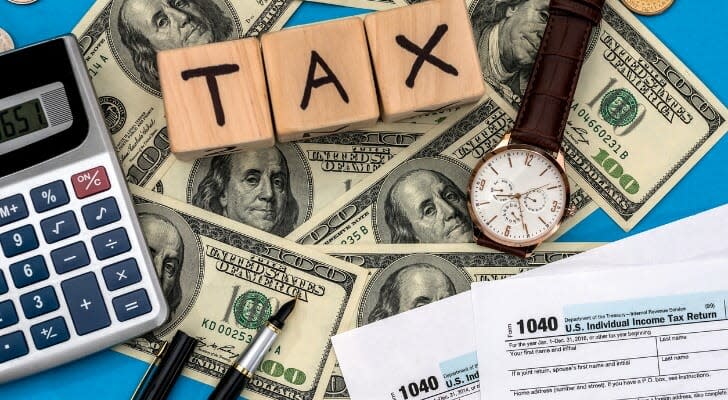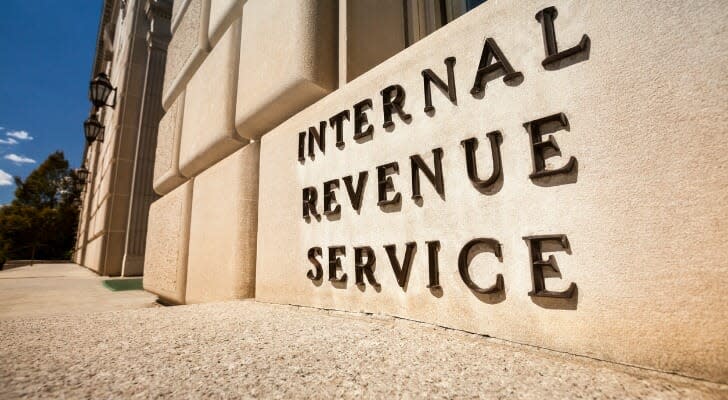Short-Term Capital Gains Tax Rate for 2021
Capital gains tax generally applies when you sell an investment or asset for more than what you paid for it. In other words, any profits resulting from the sale are considered taxable in the eyes of the Internal Revenue Service. Whether you pay the short-term capital gains tax rate or long-term capital gains depends on how long you held the investment before selling it. Short-term capital gains are subject to ordinary income tax rates, which are set by law and overseen by the IRS.
The tax code can be confusing, which is why working with a financial advisor to make sure you’re not overpaying makes a great deal of sense.
What Is Short-Term Capital Gains Tax?
Short-term capital gains tax is a tax on gains resulting from the sale of assets you’ve held for one year or less. The short-term capital gains tax is typically applied to the sale of securities, including stocks and mutual funds. But it’s also possible to be assessed short-term capital gains tax on the sale of other assets, such as real estate, vehicles or collectibles.
Say you’re interested in flipping homes for profit, for example. You buy a home, invest some money in fixing it up, then sell it for a $40,000 profit six months later. If you held the home for one year or less then you might owe short-term capital gains tax on the proceeds from the sale. The same may be true if you buy and sell antique cars as a hobby or side hustle.
So why does capital gains tax exist? One simple reason. The IRS assesses capital gains tax as a means of raising revenue for the government. This revenue is then used to fund government programs and spending.
Short-Term Capital Gains Tax Rates 2021
The IRS uses ordinary income tax rates to tax capital gains. That means the tax on any investments you sell on a short-term basis would be determined by your tax bracket. Your tax bracket is based on your income and filing status. Here’s how short-term capital gains tax rates for 2021 compare by filing status.
Short-Term Capital Gains Tax Rates 2021 Rate Single filers Married couples filing jointly Head of household 10% Up to $9,950 Up to $19,900 Up to $19,900 12% $9,951 to $40,525 $19,901 to $81,050 $14,201 to $54,200 22% $40,526 to $86,375 $81,051 to $172,750 $54,201 to $86,350 24% $86,376 to $164,925 $172,751 to $329,850 $86,351 to $164,900 32% $164,926 to $209,425 $329,851 to $418,850 $164,901 to $209,400 35% $209,426 to $523,600 $418,851 to $628,300 $209,401 to $523,600 37% $523,601 or more $628,301 or more $523,601 or more
Any short-term gains you realize are included with your other sources of income for the year for tax purposes. So if you have $20,000 in short-term gains and earn $100,000 in salary from your day job, the IRS considers your total taxable income to be $120,000.
It’s important to remember that the U.S. uses a progressive tax system. This means that the same ordinary income tax rate may not apply to your total income for the year if it includes short-term capital gains. If you have earned income from working as well as short-term capital gains from the sale of investments, it’s possible that multiple tax rates could be applied to determine what you owe.
In addition to federal short-term capital gains tax, you may also pay taxes on capital gains at the state level. Where you live can determine if you’re subject to short-term capital gains tax and whether you’ll pay a rate that’s equivalent to your ordinary income tax rate or below it.
Short-Term vs. Long-Term Capital Gains Tax
The long-term capital gains tax rate applies to investments that you sell for a profit after holding them longer than one year. Between the short-term and long-term capital gains tax rate, the long-term rate is more favorable to investors. That’s because it’s not tied to your ordinary income tax bracket. Here’s what the long-term capital gains tax rate for 2021 looks like.
Long-Term Capital Gains Tax Rates 2021 Rate Single Filers, Taxable Income Over Married Couples Filing Joint Returns, Taxable Income Over Heads of Households, Taxable Income Over 0% $0 $0 $0 15% $40,400 $80,800 $54,100 20% $445,850 $501,600 $473,750
As you can see, the long-term capital gains tax rates are lower overall compared to the short-term capital gains tax. And for some taxpayers, there may be no capital gains tax at all associated with the sale of investment securities or other assets.
How to Minimize Short-Term Capital Gains Tax
The tax bracket you land in is determined by your income and filing status. But it’s possible to minimize your short-term capital gains tax liability. Here are some options you might consider for reducing your investment tax bill:
Hold investments longer. Avoiding the short-term capital gains tax rate may be as simple as holding on to investments longer than a year. Whether this is realistic for you or not can depend on whether you’re an active day trader or you prefer a buy-and-hold approach to build a portfolio.
Harvest losses. Tax-loss harvesting allows you to offset capital gains by selling some of your investments at a loss. This is a strategy you can apply inside a taxable brokerage account. Though it’s possible that losses may be harvested automatically if you’re using a robo-advisor to invest.
Consider asset location. Asset allocation is important for creating a diversified portfolio but asset location matters from a tax perspective. Capital gains tax only applies to investments held in taxable brokerage accounts. So you may benefit from keeping some of your assets in a tax-advantaged account, such as a 401(k) or IRA.
Reinvest dividends. Dividend reinvestment allows you to buy additional shares of stock without investing money out of pocket. If you have dividend-paying stocks, consider reinvesting dividends to bolster your portfolio so you’re less tempted to sell off your winners. Keep in mind, however, that dividends are still taxable even if they’re reinvested.
Your financial advisor or tax preparer may be able to offer additional solutions or guidance on how to manage your investment tax liability. And it’s also important to remember that investment taxes are one part of the puzzle. Claiming tax credits or deductions could help put you in a lower tax bracket, which can mean paying less in short capital gains tax. For example, you may be able to deduct certain investment interest expenses when you file your taxes. Deductions reduce your taxable income while credits reduce your tax liability.
The Bottom Line
Paying capital gains tax may be unavoidable in certain scenarios but there are things you can do to minimize what you’ll pay for short-term gains. Creating an investment strategy that’s tax-diversified can help you to keep more of your gains over time.
Tips for Investing
If you’re just getting started with investing, it’s important to manage fees while you’re managing taxes, as fees can eat away at overall returns. Choosing the right brokerage can help. More online brokerages now offer commission-free trading for U.S. stocks and exchange-traded funds (ETFs). Researching brokerages can help you find one that offers the best combination of investment options, features and cost to meet your needs.
Consider talking to a financial advisor about the best way to manage short-term investments and their associated gains. Finding a qualified financial advisor doesn’t have to be hard. SmartAsset’s free tool matches you with up to three financial advisors in your area, and you can interview your advisor matches at no cost to decide which one is right for you. If you’re ready to find an advisor, get started now.
Photo credit: ©iStock.com/alfexe, ©iStock.com/Pgiam, ©iStock.com/Kemal Yildirim
The post Short-Term Capital Gains Tax Rate for 2021 appeared first on SmartAsset Blog.




